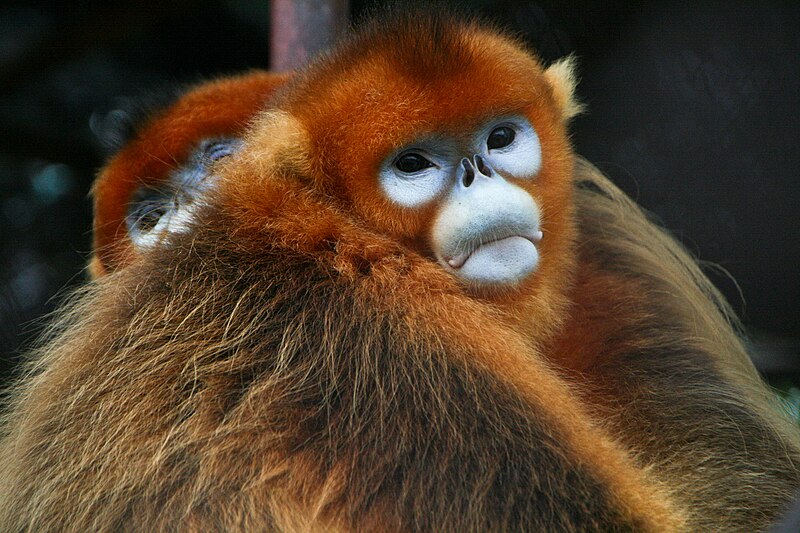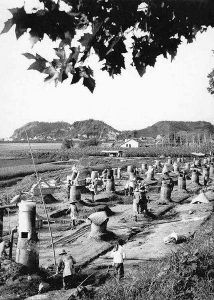Click subsections below for further information
- General Information
- Geographical Context
- History of the Issue
- Policy Initiatives in China
- Impacted Communities
General Information
China is one of the most biologically diverse places on earth with a tremendous variety of ecosystems. It has more than 30,000 species of seed plants and 6,300 species of vertebrates, accounting for 14 percent of the world’s total (Marks, 2012). A considerable portion of these species have great academic and scientific values and are found nowhere else in the world (Liu et al., 2003). The spectacular wildlife and natural beauty in China has even attracted Disney shooting its first Chinese-made features documentary “Born in China” that depicted the stunning landscapes and heartwarming scenes about endangered Giant Panda, Golden Monkey and Snow Leopard. (Conli, 2016).
However, these species are now suffering from an explosive increase in the intensity and extent of human activities. The shrinking forest and wetland due to simplification of land, overexploitation of water resources, and severe pollution, have put numerous species at risk of extinction. The updated International Union for Conservation of Nature (IUCN) Red List reports that 1,078 known species in China are categorized as critically endangered, endangered, or vulnerable, placing China among the countries with the most threatened the species (IUCN, 2016).
Geographical Context

The elevated Himalayan Mountains and Tibetan Plateau has created a “rain shadow” that dries out much of the land in north and northwest of China (Marks, 2012). In contrast, the east coastal region that spanned over temperate, subtropical and tropical zones was affected by the moisture from East Asian Monsoon and had a large amount of precipitation. This unique geography and landscape has created the extraordinary ecosystems and biodiversity of China: the giant panda in Sichuan Basin, the snow leopard and Tibetan antelope in Tibetan Plateau, the Chinese sturgeon and Chinese river dolphin in Yangtze River (Liu et al., 2003).

The monsoonal rain in east parts of China has also largely confined the forests to the eastern half of the country (Menzies, as cited in Marks, 2012). The bustling waterways, fertile wetland and dense forests in the eastern China river drainage have made itself a favorable region for human settlement and cultivation, and have given rise to many ancient China civilization. However, during the last century, the increasing intensity of human activities, due to industrialization and urbanization, have caused a number of environmental changes; this includes change in land use, overexploitation, invasive species, disease and climate changes, putting numerous species at these region at risk of extinction.

History of the Issue
- From the neolithic age, Chinese people have developed a wide range of agricultural techniques to exploit the abundant resources on their fertile land (Duan, 1996). Forests were removed to make way for farmland after being cut down or burnt.
- After the establishments of the unified Qin dynasty, the invention of iron farming implements and the application of animal husbandry largely improved the efficiency of farmland production and thus allow people to cultivate more land (Duan, Gan, Wang, & Chien, 1998). The progressive deforestation has taken a devastating toll on habitats, pushing a great number of species like tigers and elephants to the outskirts (Marks, 2012).
- The political collapse, foreign invasion, and civil war in 19th and 20th century had put a severe strain on the environment.
-

The furnace to produce steel during Great Leap Forward In modern China, the efforts to dominant the nature and pursuit of rapid economic led by Mao Zedong and Deng Xiaoping have driven more devastating environmental degradation (Marks, 2012). The shrinking forest and wetland, overexploitation of water resources, and severe pollution, have put numerous species at risk of extinction.
Policy Initiatives in China
There have been a number of policy efforts aimed at saving endangered species, especially in creating laws to prohibit poaching of exotic animals; in 2014, China passed a law that anyone who eats, or buys endangered species is subject to ten years in jail. Commercial capture of the endangered species are generally prohibited. The government has also granted the most endangered species, for example, the Chinese sturgeon Category I protection status, making them a protected priority in Chinese policy (Zhuang et al., 2016).
For the most part though, China’s laws on endangered species focuses on prohibiting commercial exploitation, which only makes up only for a part of why these species are endangered in the first place. Legislators must address the root problems of China’s industrialization practices if they hope to save endangered species in their country.
Impacted Communities
Communities in tropical China around the Yangtze River are growing in population due to the rapid industrialization and urbanization.
“Tropical Asia is overpopulated, and many people are poor, landless, and crowded in burgeoning cities.” (Dudgeon, 2000).

While the deforestation, overexploitation, pollution, and massive constructions have seriously damaged the ecosystems and endangered species population, they also had huge implications for people. For the construction of the Three Gorge Dam, 1.13 million people were displaced from their homes (Yardley, 2007). This reflects a greater tension between the growing environmental-industrial sector, and its environmental and social consequences. The Three Gorges Dam is a great source for in the clean hydropower it brings, but this has come at the cost of disrupting millions of people’s lives. It is usually marginalized communities that deal with the greater consequences of pollution, climate change and species endangerment.
Sources:
Associated Press. (2015). Man Fishing on the Yangtze River. Retrieved from http://www.nwcable.net/news/read/category/world/article/the_associated_press-yangtze_river_long_river_long_history_top_tourist-ap
Backyard furnace to produce steel during the Great Leap Forward era. [photograph] (1958). Retrieved from https://commons.wikimedia.org/wiki/File:Backyard_furnace4.jpg
CCTV News. (2014, June 2). China cracks down on eating endangered species. Podcast retrieved from https://www.youtube.com/watch?v=8qLIRU2Xqy0
Conli, R. (Producer). (2016, April 22). Born in China Official ‘Earth Day’ Trailer (2017) – Disneynature Documentary HD. Podcast retrieved from https://www.youtube.com/watch?v=6xRQ5qOtsHI&t=61s
Duan, C. (1996). The rise and fall of civilization of ancient China affected by anthropogenic environment. Ideological Fronts, 130, 75-88.
Duan, C., Xue-Chun, G., Wang, J., & Chien, P. K. (1998). Relocation of civilization centers in ancient China: Environmental factors. Ambio, 572-575.
Dudgeon, D. (2000). The ecology of tropical Asian rivers and streams in relation to biodiversity conservation. Annual Review of Ecology and Systematics, 239-263.
IUCN (2016). The IUCN Red List of Threatened Species. Version 2016-2. Retrieved from http://www.iucnredlist.org.
Flickr (2009). Golden Snub-Nosed Monkey. [Photograph]. Retrieved from https://commons.wikimedia.org/wiki/File:Golden_Snub-nosed_Monkeys.jpg
Li, Z. (2014.) Off the Menu: China Moves to Protect Endangered Species. http://www.cnn.com/2014/04/30/world/asia/china-wildlife-law/
Liu, J., Ouyang, Z., Pimm, S. L., Raven, P. H., Wang, X., Miao, H., & Han, N. (2003). Protecting China’s biodiversity. Science, 300(5623), 1240-1241. doi: 10.1126/science.1078868
Marks, R. B. (2012). China: its Environment and History. New York, NY: Rowman & Littlefield Publishers, INC.
Tambako The Jaguar. (2009). Portrait of a male snow leopard (Panthera uncia) of the Rheintal zoo. [Photograph]. Retrieved from https://en.wikipedia.org/wiki/File:Snow_leopard_portrait.jpg
U.S. Central Intelligence Agency (1986). Maps of China: Agricultural regions of China. [Map]. Retrieved from https://commons.wikimedia.org/wiki/File:China_agricultural_1986.jpg
Yardley J. (2007). Chinese Dam Projects Criticized for their Human Costs. The New York Times. http://www.nytimes.com/2007/11/19/world/asia/19dam.html
Zhuang, P., Zhao, F., Zhang, T., Chen, Y., Liu, J., Zhang, L., & Kynard, B. (2016). New evidence may support the persistence and adaptability of the near-extinct Chinese sturgeon. Biological Conservation, 193, 66-69.
